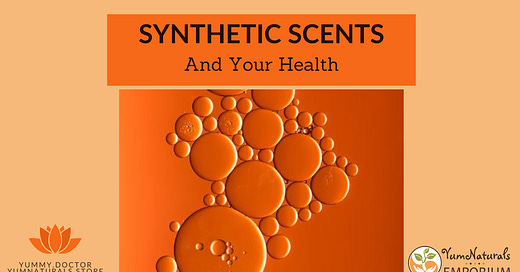What Are Synthetic Fragrances?
Synthetic fragrances can have a negative impact on our health. The compounds used to create these fragrances are known or suspected endocrine disruptors, meaning they tinker with our hormonal health and can trigger disease states. These chemicals are found in a wide range of products, including cosmetics, lotions, shampoos, cleaning products, new furniture, and air fresheners. Studies have found that exposure (through skin absorption or inhalation) to synthetic fragrances can lead to various health issues such as headaches, asthma attacks, allergies, and skin irritation. In addition to this, some of these chemicals have been linked to an increased risk of cancer and other serious diseases.
When I was pregnant and still living in Toronto, I would walk my dog around the block and by the time I was done, I felt ill from the stench of the toxic clothes dryer exhaust coming out of the homes. That was one of my many reasons I decided to leave the city for countr…
Keep reading with a 7-day free trial
Subscribe to ADV's Healthy Dose of Truth to keep reading this post and get 7 days of free access to the full post archives.





